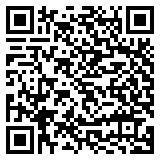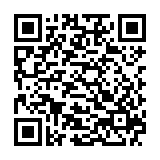AI-powered translation tools have revolutionized global communication, making it easier than ever for businesses to break language barriers. However, while these tools offer speed and cost efficiency, they don’t always guarantee accuracy. A mistranslated phrase can lead to misunderstandings, brand damage, or even legal issues. So, how can businesses ensure that AI translations meet the necessary quality standards? Let’s break down the key factors to consider when evaluating AI translation accuracy.
Key Factors in Evaluating AI Translation Accuracy
Linguistic Accuracy and Grammar
The most basic requirement of any translation is that it follows the grammatical rules of the target language. AI tools can sometimes misinterpret sentence structures, leading to unnatural or incorrect phrasing. Businesses should check for:
- Proper syntax and sentence flow
- Correct verb conjugations and tenses
- Accurate use of punctuation and articles
Contextual Understanding
AI translations often struggle with context, especially in complex oridiomatic language. A phrase that makes sense in one language might not translate directly into another. To assess contextual accuracy, businesses should:
- Compare AI output to human translations
- Check if the translation makes sense within the full document
- Look out for awkward phrasing or overly literal translations
Cultural Sensitivity
A translation that is technically accurate can still fail if it doesn’t resonate with the target audience. Cultural nuances, humor, and idioms don’t always translate well. Businesses should:
- Ensure localized expressions fit the target audience
- Avoid words or phrases with unintended cultural connotations
- Adapt humor, metaphors, and tone as needed
Industry-Specific Terminology
AI translation tools may not always recognize specialized terms, which is critical for industries like legal, medical, and technical fields. To maintain precision, businesses should:
- Use translation memory tools for consistency
- Verify industry terms with human experts
- Ensure regulatory and compliance-related terms are correct
Readability and Natural Flow
Even if an AI translation is technically accurate, it should still sound natural to a native speaker. Businesses can check for:
- Overly robotic or unnatural phrasing
- Sentences that feel too literal or fragmented
- Readability that matches professional or brand standards
How Businesses Can Improve AI Translation Accuracy
Use Human Post-Editing
One of the most effective ways to improve AI translations is through human post-editing. Professional translators can refine AI-generated text to ensure accuracy, fluency, and cultural relevance.
Train AI with Company-Specific Data
Many AI translation tools allow businesses to train models with industry-specific terminology and brand voice guidelines. Investing in customized AI training improves translation quality over time.
Leverage Hybrid Translation Approaches
Instead of relying solely on AI, businesses can use a mix of AI-generated drafts and human refinements. This hybrid approach balances efficiency with high-quality output.
Conclusion
AI translations can be a powerful tool, but accuracy isn’t always guaranteed. Businesses can ensure high-quality translations that effectively communicate with global audiences by evaluating linguistic precision, context, cultural relevance, and industry-specific terminology. While AI is a great starting point, human expertise remains essential for refining and validating translations.





0 Comments